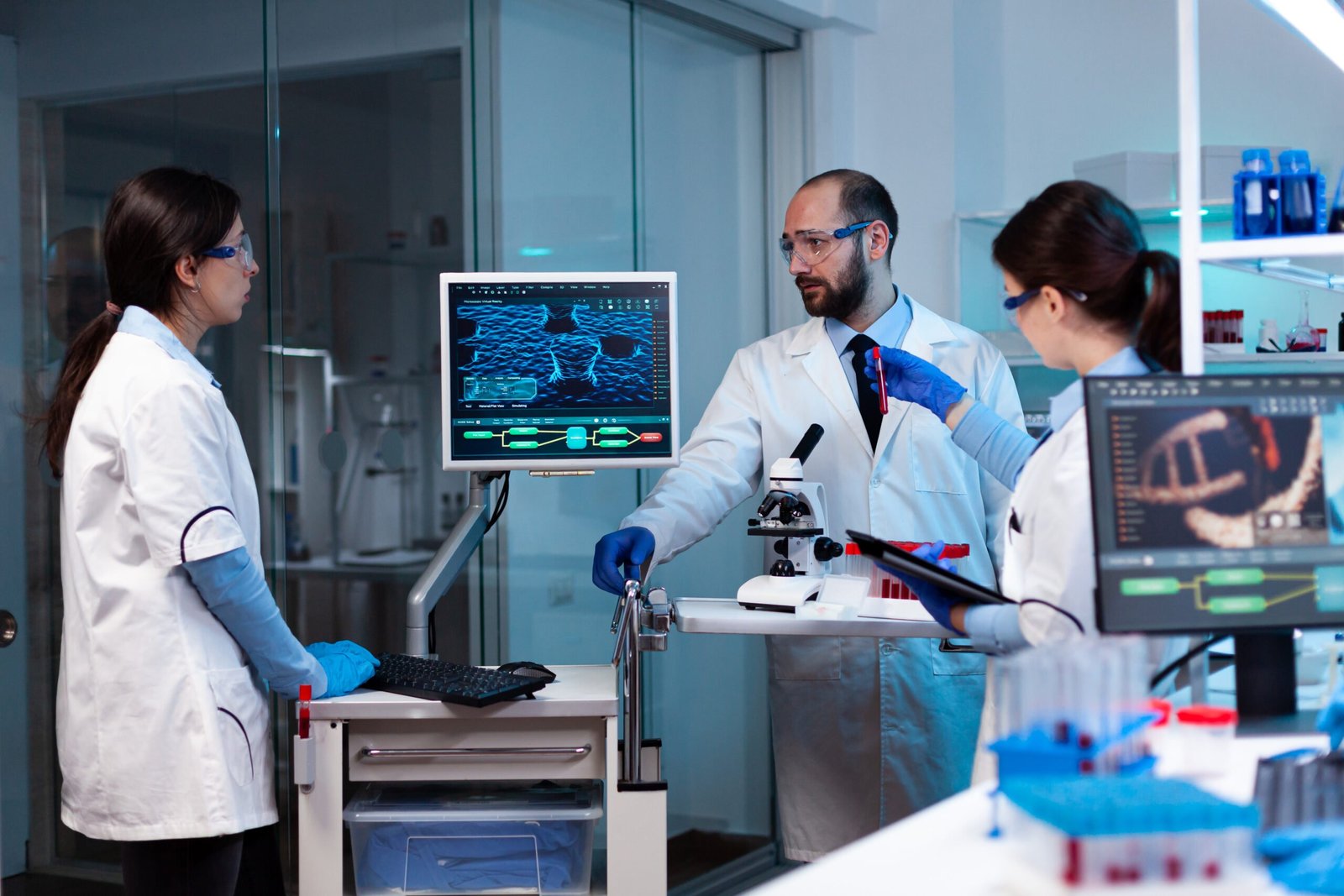Medical Devices: Leading the Frontier of Health Innovations
Medical Devices: Pioneering Research and Innovations

Introduction:
Medical devices have become an indispensable element in modern healthcare, transforming the way diseases are diagnosed, treated, and managed. From the simplest tools to the most complex machinery, these devices have dramatically enhanced patient outcomes and revolutionized medical practices. In this article, we will explore the pioneering research and innovations driving the future of medical devices, including notable advancements in fields like diagnostics, treatment, and patient care.
Advancements in Diagnostic Technologies
The realm of diagnostic technologies has witnessed remarkable progress, thanks to continuous research and development. Modern diagnostic devices are now more accurate, faster, and less invasive compared to their predecessors. For instance, magnetic resonance imaging (MRI) and computed tomography (CT) scans have become more sophisticated, offering high-resolution images that facilitate precise diagnosis of complex conditions (source: Radiological Society of North America).
Another pivotal innovation is the development of point-of-care testing (POCT) devices. These portable diagnostic tools allow for immediate testing and results at the patient’s bedside, significantly reducing the time for disease detection and treatment initiation. Examples include blood glucose monitors, rapid antigen tests, and portable ultrasound machines (source: National Institutes of Health).
Wearable health technology is also revolutionizing diagnostics. Devices such as smartwatches and fitness trackers continuously monitor vital signs like heart rate, blood oxygen levels, and sleep patterns, providing real-time data that can help in early disease detection and management (source: American Heart Association).
Innovations in Treatment and Therapy
Medical devices have also revolutionized therapeutic practices, leading to more effective and personalized treatments. Robotic surgery is at the forefront of this innovation, enabling surgeons to perform highly precise operations with minimal invasiveness. Systems like the da Vinci Surgical System have improved outcomes for procedures ranging from heart surgeries to prostatectomies (source: Intuitive Surgical).
Implantable devices have seen significant advancements as well. Pacemakers, cochlear implants, and artificial joints are becoming more sophisticated, offering better integration with the human body and improved functionality. For instance, modern pacemakers can now be monitored remotely, providing ongoing data to healthcare providers and reducing the need for frequent check-ups (source: British Heart Foundation).
Bioprinting represents another breakthrough in treatment innovation. This technology involves creating tissue-like structures using 3D printing techniques, which can be used for patient-specific treatments, including skin grafts, organ repair, and custom implants. The potential for bioprinting to transform regenerative medicine is enormous, with ongoing research paving the way for future clinical applications (source: Nature Biotechnology).
Enhancing Patient Care and Management
Medical devices are not just transforming diagnostics and treatments but also revolutionizing patient care and management. Telehealth platforms integrate medical devices for remote patient monitoring, enabling continuous care for chronic conditions like diabetes and hypertension. Devices such as remote blood pressure monitors and continuous glucose monitors transmit data directly to healthcare providers, allowing for real-time adjustments in treatment plans (source: American Medical Association).
Smart medication dispensers are another innovative solution, ensuring patients adhere to prescribed treatment regimens. These devices are designed to remind patients when to take their medications and dispense the correct dose, significantly reducing the risk of medication errors and improving patient outcomes (source: National Institute on Aging).
Rehabilitation devices have also seen significant advancements. Robotic exoskeletons and virtual reality (VR) systems are now used in physical therapy, providing personalized and engaging rehabilitation experiences. These technologies aid in faster recovery and improved mobility for patients with conditions such as stroke, spinal cord injuries, and neurological disorders (source: Journal of NeuroEngineering and Rehabilitation).
Regulatory Landscape and Challenges
The rapid pace of innovation in medical devices presents regulatory challenges that must be addressed to ensure safety and efficacy. Regulatory bodies like the Food and Drug Administration (FDA) and the European Medicines Agency (EMA) play crucial roles in overseeing the approval and monitoring of medical devices. Their rigorous evaluation processes ensure that new devices meet safety and performance standards before reaching the market (source: FDA, EMA).
However, the regulatory landscape is continuously evolving to keep up with technological advancements. For instance, the FDA’s Breakthrough Devices Program is designed to expedite the development and review of devices that offer significant advantages over existing options, especially for life-threatening or irreversibly debilitating diseases (source: FDA).
Despite these efforts, challenges remain, including ensuring cybersecurity for connected medical devices, maintaining data privacy, and addressing ethical concerns related to advanced technologies like AI and bioprinting. Regulatory frameworks must evolve to address these issues while fostering innovation and ensuring patient safety (source: Journal of Medical Internet Research).
Future Trends and Emerging Technologies
The future of medical devices promises even more transformative changes, driven by emerging technologies and innovative research. Artificial Intelligence (AI) and machine learning are expected to play pivotal roles in diagnostics, treatment planning, and personalized medicine. AI algorithms can analyze vast amounts of data to identify patterns and predict outcomes, enhancing the accuracy and efficiency of medical decision-making (source: Lancet Digital Health).
Nanotechnology is another frontier with immense potential. Nanodevices and nanoparticles can be used for targeted drug delivery, allowing for precise treatment of diseases at the cellular level. Research in this field is exploring applications ranging from cancer therapy to regenerative medicine, with promising results (source: Nature Nanotechnology).
The Internet of Medical Things (IoMT) is also set to expand, connecting various medical devices to create integrated healthcare ecosystems. This connectivity will enable seamless data sharing and real-time monitoring, improving patient care coordination and outcomes. Innovations in IoMT are expected to drive the next wave of digital health transformation (source: IEEE Internet of Things Journal).
Conclusion:
The continuous advancements in medical devices are reshaping the landscape of healthcare, offering new possibilities for diagnostics, treatment, and patient care. With ongoing research and innovation, these devices will continue to enhance medical practices and improve patient outcomes. However, navigating regulatory challenges and ethical considerations will be crucial in ensuring the safe and effective integration of these technologies into clinical practice. The future of medical devices holds immense promise, driven by emerging technologies and pioneering research that will undoubtedly transform the healthcare industry.
Key Takeaways:
- Medical devices have transformed healthcare through advancements in diagnostics, treatment, and patient care.
- Innovations in diagnostic technologies include high-resolution imaging, point-of-care testing, and wearable health technology.
- Treatment innovations encompass robotic surgery, implantable devices, and bioprinting.
- Patient care has been enhanced by telehealth platforms, smart medication dispensers, and advanced rehabilitation devices.
- Regulatory bodies ensure the safety and efficacy of medical devices, but challenges like cybersecurity and ethical concerns must be addressed.
- Future trends include AI, nanotechnology, and the Internet of Medical Things (IoMT), promising further advancements in healthcare.
FAQs
1. What are the key advancements in diagnostic technologies?
- High-resolution imaging like MRIs and CT scans.
- Point-of-care testing (POCT) devices for rapid results.
- Wearable health technology for continuous monitoring.
2. How have medical devices improved treatment options?
- Robotic surgery systems for precise, minimally invasive operations.
- Advanced implantable devices such as pacemakers and cochlear implants.
- Bioprinting for creating tissue-like structures for personalized treatment.
3. What innovations have enhanced patient care?
- Telehealth platforms for remote patient monitoring.
- Smart medication dispensers to ensure adherence to treatment regimens.
- Rehabilitation devices like robotic exoskeletons and VR systems.
4. What role do regulatory bodies play in medical device approval?
- Ensuring safety and efficacy through rigorous evaluation.
- Programs like the FDA’s Breakthrough Devices Program to expedite approvals.
- Continuous adaptation to keep pace with technological advancements.
5. What are the main challenges in regulating medical devices?
- Ensuring cybersecurity for connected devices.
- Maintaining data privacy for patient information.
- Addressing ethical concerns related to AI and bioprinting.
6. How is AI transforming medical devices?
- Enhancing diagnostics and treatment planning through data analysis.
- Personalizing medicine by predicting patient outcomes.
- Improving the accuracy of medical decision-making.
7. What is the potential of nanotechnology in medical devices?
- Targeted drug delivery at the cellular level.
- Applications in cancer therapy and regenerative medicine.
- Ongoing research exploring various medical uses.
8. What is the Internet of Medical Things (IoMT)?
- Connecting medical devices to create integrated healthcare ecosystems.
- Enabling seamless data sharing and real-time patient monitoring.
- Driving digital health transformation.
9. What are some examples of point-of-care testing devices?
- Blood glucose monitors.
- Rapid antigen tests.
- Portable ultrasound machines.
10. What future trends are expected in medical device innovation?
- Increased use of Artificial Intelligence (AI) and machine learning.
- Advances in nanotechnology for medical applications.
- Expansion of the Internet of Medical Things (IoMT).
Sources:
- Radiological Society of North America
- National Institutes of Health
- American Heart Association
- Intuitive Surgical
- British Heart Foundation
- Nature Biotechnology
- American Medical Association
- National Institute on Aging
- Journal of NeuroEngineering and Rehabilitation
- FDA
- EMA
- Journal of Medical Internet Research
- Lancet Digital Health
- Nature Nanotechnology
- IEEE Internet of Things Journal








